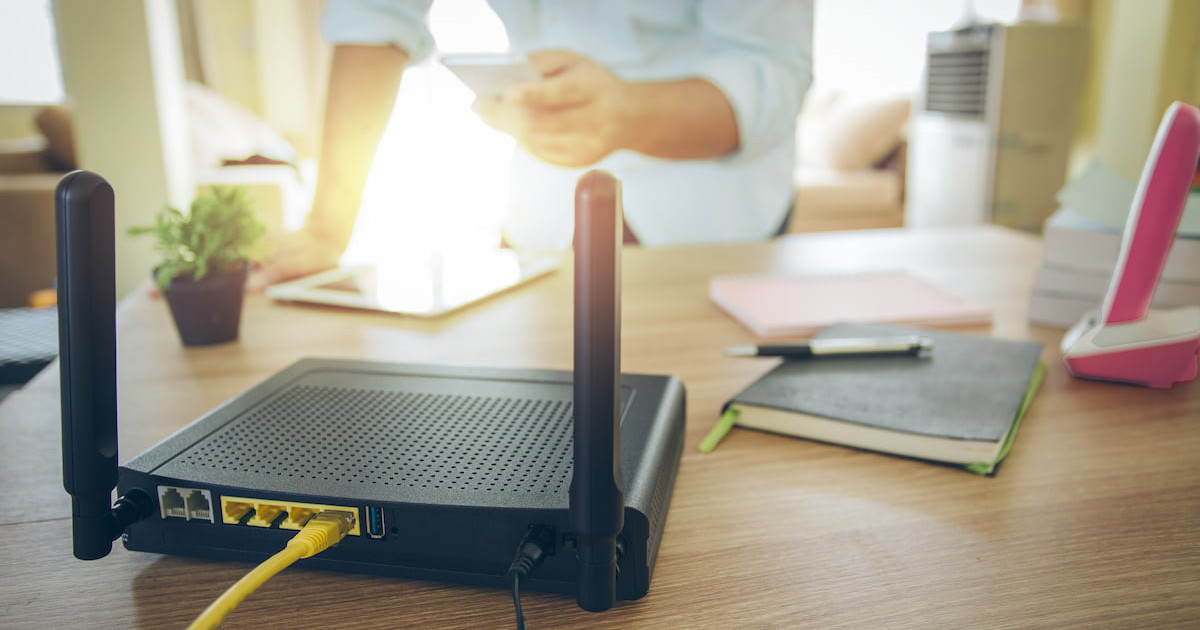Best Graphics Cards: Get Crystal Clear Gaming
Apr 12, 2019 | Share
Equipment Guides, Gaming
Looking for smooth gameplay? It’s in the cards.
| Latest and Greatest | Best for Future Games | Best for Current Games | Best Deal | Most Affordable |
|---|---|---|---|---|
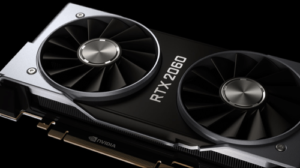 | 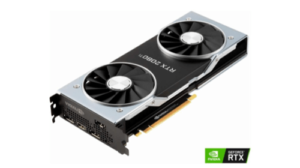 | 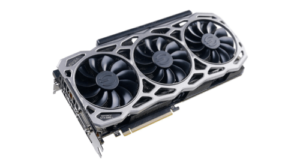 | 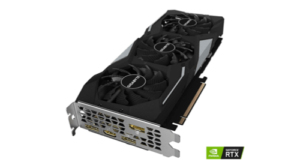 | 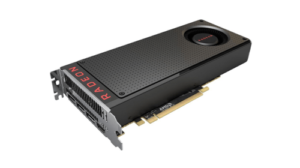 |
| NVIDIA GeForce RTX 2060 | NVIDIA GeForce RTX 2080 Ti Founders Edition | EVGA GeForce GTX 1080 Ti FTW3 Gaming | Gigabyte GeForce RTX 2060 Gaming OC | AMD Radeon RX 580 |
| View Details | View on Amazon | View on Amazon | View on Amazon | View on Amazon |
Installing a good graphics card can be the difference between playing a game and escaping into it. Here are the graphics cards we recommend for turning your monitor into a portal to another dimension.
Our Top 5 Graphics Cards for Gaming
| Graphics Processor | VRAM | TFLOPS | Memory Type | Amazon Rating | Price | Get It | |
|---|---|---|---|---|---|---|---|
| NVIDIA GeForce RTX 2060 | 6 GB | 6.5 | GDDR6 | N/A | $$ | View Details | |
| NVIDIA GeForce RTX 2080 Ti Founders Edition | 11 GB | 13.4 | GDDR6 | 3.5/5 | $$$$$ | Buy Now | |
| EVGA GeForce GTX 1080 Ti FTW3 Gaming | 11 GB | 11.3 | GDDR5X | 4.5/5 | $$$$$ | Buy Now | |
| Gigabyte GeForce RTX 2060 Gaming OC | 6 GB | 4.6 | GDDR5 | 4.5/5 | $ | Buy Now | |
| AMD Radeon RX 580 | 8 GB | 6.2 | GDDR5 | 5/5 | $ | Buy Now |
| Graphics Processor | NVIDIA GeForce RTX 2060 |
| VRAM | 6 GB |
| TFLOPS | 6.5 |
| Memory Type | GDDR6 |
| Amazon Rating | N/A |
| Price | $$ |
| Get It | View Details |
| Graphics Processor | NVIDIA GeForce RTX 2080 Ti Founders Edition |
| VRAM | 11 GB |
| TFLOPS | 13.4 |
| Memory Type | GDDR6 |
| Amazon Rating | 3.5/5 |
| Price | $$$$$ |
| Get It | Buy Now |
| Graphics Processor | EVGA GeForce GTX 1080 Ti FTW3 Gaming |
| VRAM | 11 GB |
| TFLOPS | 11.3 |
| Memory Type | GDDR5X |
| Amazon Rating | 4.5/5 |
| Price | $$$$$ |
| Get It | Buy Now |
| Graphics Processor | Gigabyte GeForce RTX 2060 Gaming OC |
| VRAM | 6 GB |
| TFLOPS | 4.6 |
| Memory Type | GDDR5 |
| Amazon Rating | 4.5/5 |
| Price | $ |
| Get It | Buy Now |
| Graphics Processor | AMD Radeon RX 580 |
| VRAM | 8 GB |
| TFLOPS | 6.2 |
| Memory Type | GDDR5 |
| Amazon Rating | 5/5 |
| Price | $ |
| Get It | Buy Now |
Graphics cards are often referred to as graphics processing units (GPUs). All the GPUs we recommend use PCIe 3.0 x16 motherboard slots and have eight-pin power connections, making them compatible with many current motherboards.
1. NVIDIA GeForce RTX 2060
- VRAM: 6 GB
- TFLOPS: 6.4*
- Memory Type: GDDR6
- Memory Speed: 14 Gbps
- Power Consumption: 160 W
- Base Clock Speed: 1,365 MHz
- Boosted Clock Speed: 1,680 MHz
- Dimensions: 9″ x 4.5″ x 2-slot
The NVIDIA GeForce RTX 2060 is the new hotness in graphics cards. NVIDIA’s new Turing technology uses artificial intelligence and ray tracing to provide breathtaking clarity and smooth motion rarely seen at such a low price point. Some cards with similar abilities can cost three or four times as much.
This new card is not available on Amazon yet, but you can get it directly from NVIDIA.
![]() Pros:
Pros:
- Great buffering speed
- Affordability
![]() Cons:
Cons:
- Limited availability (so far)
*According to TechPowerUp.com
2. NVIDIA GeForce RTX 2080 Ti Founders Edition
- VRAM: 11 GB
- TFLOPS: 13.4*
- Memory Type: GDDR6
- Memory Speed: 14 Gbps
- Power Consumption: 260 W
- Base Clock Speed: 1,350 MHz
- Boosted Clock Speed: 1,545 MHz
- Dimensions: 10.5″ x 4.6″ x 2-slot
If you’re looking to future proof your computer, this is the card you want. Capable of executing over 13 TFLOPS, this card delivers more than enough processing power for modern AAA games. As future games become more demanding, the headroom you get with the NVIDIA GeForce RTX 2080 Ti Founders Edition will keep your machine running smoothly for the foreseeable future.
The downside to all that processing power is that it will take a lot of electrical power. This GPU consumes more power than the others we recommend. It’s also the most expensive. But if you want the card that will last you into the future, that’s the price you gotta pay.
![]() Pros:
Pros:
- Great buffering speed
- Enough power for future games
![]() Cons:
Cons:
- Higher power consumption
*According to TechPowerUp.com
3. EVGA GeForce GTX 1080 Ti FTW3 Gaming
- VRAM: 11 GB
- TFLOPS: 11.3*
- Memory Type: GDDR5X
- Memory Speed: 11 Gbps
- Power Consumption: 200 W
- Base Clock Speed: 1,683 MHz
- Boosted Clock Speed: 1,683 MHz
- Dimensions: 12.8″ x 9.5″ x 2.8″
Another great card for high-end gaming, the EVGA GeForce GTX 1080 Ti FTW3 delivers nearly as much performance as the GeForce RTX 2080 Ti we discussed above, but it consumes less power. It’s also slightly less expensive, although it still has a hefty price tag. This is the GPU we recommend for our badass kit.
With the three-fan cooling system, this GPU will keep your games running smoothly even during long sessions. The clear, seamless images it delivers will free you from the frustration of laggy processors, helping you stay cool too.
![]() Pros:
Pros:
- Great operating speed
- Great gaming performance
![]() Cons:
Cons:
- High price
*According to TechPowerUp.com
4. Gigabyte GeForce RTX 2060 Gaming OC
- VRAM: 11 GB
- TFLOPS: 11.3*
- Memory Type: GDDR5X
- Memory Speed: 11 Gbps
- Power Consumption: 200 W
- Base Clock Speed: 1,683 MHz
- Boosted Clock Speed: 1,683 MHz
- Dimensions: 12.8″ x 9.5″ x 2.8″
The Gigabyte GeForce RTX 2060 is similar to the NVIDIA GeForce RTX 2060. It’s got a different cooling system and a little less power. It doesn’t execute as many operations per second, but you won’t notice it on most games. The Gigabyte GeForce RTX 2060 still delivers remarkably smooth animations and clear rendering on demanding games. Plus, it’s a tad more affordable than the NVIDIA model.
For gamers looking for something with newer technology but who also want to save a little cash, this is a great option.
![]() Pros:
Pros:
- Great buffering speed
- Affordability
![]() Cons:
Cons:
- Slower operating speed
*According to TechPowerUp.com
5. AMD Radeon RX 580
- VRAM: 8 GB
- TFLOPS: 6.2
- Memory Type: GDDR5
- Memory Speed: 8 Gbps
- Power Consumption: 185 W
- Base Clock Speed: 1,257 MHz
- Boosted Clock Speed: 1,340 MHz
- Dimensions: 8″ x 5″ x 2″
For a decent GPU on a tight budget, go with the AMD Radeon RX 580. Less than $200 will get you a card that can handle most games.
This card is particularly good if you plan to play mainly online, player-versus-player (PvP) games because those games are a little less demanding, and the price of this card keeps you from paying for more power than you need.
Its buffering speed is a little slower than the other cards we recommend, and it has only one cooling fan, so it may run hot on AAA games. That may impact its longevity. But for a budget-conscious or first-time builder, this is a solid graphics card.
![]() Pros:
Pros:
- Good speed
- Great price
![]() Cons:
Cons:
- Slower buffering speed than our other recommended cards
What should I consider when choosing a graphics card?
Performance
VRAM
Video random-access memory (VRAM) is the amount of space your graphics card has for processing digital video information. Higher VRAM can deliver more efficient processing, which can translate into smoother animations and transitions on your video display.
TFLOPS
Floating operations per second (FLOPS) is the number of individual changes a GPU can process in a second. Because modern cards can handle trillions of FLOPS, the large numbers are often represented as teraFLOPS or trillions of FLOPS (TFLOPS). More FLOPS is a sign of a faster GPU, and faster processing translates into a more seamless gaming experience.
Memory Type
This is less relevant than it used to be since the proliferation of the graphics double data rate version five (GDDR5). Now most top-end cards use this as a baseline. Subsequent generations—GDDR 5x and GDDR6—are even better.
Compatibility
A great graphics card won’t do anything for you if it doesn’t work with the rest of your computer parts. Below we’ll discuss some of the specs to look for when trying to match up a GPU with your motherboard, but you can also use tools like PCPartPicker.com.
Motherboard Connection
Make sure you choose a GPU that fits into one of the card slots on your motherboard. This will usually be determined by the length of the slot and the memory protocol they use.
The GPUs we recommend all have a PCIe 3.0 x16 connection. That means they use peripheral component interconnect express (PCIe) protocol version 3.0 and require a 16-channel slot.
Most modern motherboards have a 16-channel slot and use PCIe protocol, but some motherboards still use AGP protocol. You can’t use a PCIe GPU with an AGP motherboard.
The good news is that you can use PCIe 3.0 cards on motherboards with older PCIe versions, although they will be limited by the older technology.
Power Connection
Your GPU needs power, so check the power connections you have available from your computer’s power supply. The connections come in a variety of sizes and configurations, ranging from two pins up to 16 pins. Some of them are adjustable so you can configure them in different ways. The graphics cards we recommend all come with 8-pin connections.
Power Consumption
Plugging in the power is only half the battle; you also need your power supply to handle the extra wattage for your GPU. A good guideline is to have a power supply that is three times what your GPU draws.
The power requirements for the graphics cards we recommend vary from 150 W to 260 W. So, to use these cards, your power supply should pump out somewhere between 450–780 W.
Monitor
Your video display will only be as good as your monitor or your graphics card, whichever one is worse. Price ranges on monitors and graphics cards are pretty similar, so spend the same amount on both. Otherwise, you’ll end up with one good piece of equipment that’s limited by a cheaper one. See our recommended gaming monitors.
What are the different types of graphics cards?
Onboard
These are the cards that sometimes come with pre-packaged PCs. They’re called onboard because instead of plugging into one of the slots on the motherboard, these cards are affixed to the motherboard.
AGP
Accelerated graphics port (AGP) cards are aptly named because they plug into the AGP slots in the motherboard. These cards are compatible with many motherboards, but they aren’t as fast as the PCI or PCIe cards. The speed limitations of AGP cards will likely lead to a future decline in popularity.
PCI
Peripheral component interconnect (PCI) graphics cards are also named after the connection slot they use. PCI cards are largely being replaced by PCIe cards, but they can be perfect for upgrading your old computer.
PCIe
Most of the best new GPUs are peripheral component interconnect express (PCIe) cards, including all that we recommend.
As technology advanced and better versions of PCIe cards came out, they’re now on version three. They are backward compatible but will only work as fast as the lowest version is capable.
Ready to play?
Armed with the tips in this article, you’re ready to find a GPU that fits your budget and your computer so you can lose yourself in the life-like animations of your favorite games.
A good graphics card won’t solve a bad internet connection.
Even the best graphics card won’t help your online gaming much if your internet connection is too slow.
See internet speeds and providers available near you.
Frequently Asked Questions
Should I get two graphics cards for one computer?
It all depends on your setup. Multiple graphics cards (GPUs) can help with performance, but they’re usually expensive and need a decent amount of power. That trade-off might not be worth it for you.
If you have the space on your motherboard and enough power to handle a second card, it could be worth it. But if getting a second graphics card means upgrading your motherboard, your power supply, and possibly your case, you may find it more cost-efficient to simply upgrade your GPU.
What’s the best graphics card for gaming?
The NVIDIA GeForce RTX 2080 Ti Founders Edition is a great choice for gaming. Not only does it run today’s AAA games with ease, but it also has the overhead to handle future games.
Is a GTX 1050 good for gaming?
- Yes, it is if you primarily play online, player-versus-player games. The GTX 1050 card series handles games like Dota 2 remarkably well for the price.
- No, it isn’t if you’re looking to run AAA games at the highest settings. Many top-end games, like Grand Theft Auto V, would push the GTX 1050 too hard.
Which graphics card is the most powerful?
As of the day this was written, the NVIDIA TITAN RTX, but you’ll have to pay big for that power. The NVIDIA GeForce RTX 2080 Ti Founders Edition and EVGA GeForce GTX 1080 Ti FTW3 Gaming we recommend still give you enough power for high-end games for about $1,000 less.
Edited by Cara Haynes
Author - John Dilley
With over five years writing about the internet industry, John has developed a deep knowledge of internet providers and technology. Prior to writing professionally, John graduated with a degree in strategic communication from the University of Utah. His education and experience make his writing easy to understand, even when covering complex topics. John’s work has been cited by Xfinity.com, PCMag, The Washington Post, Los Angeles Times, and more.

